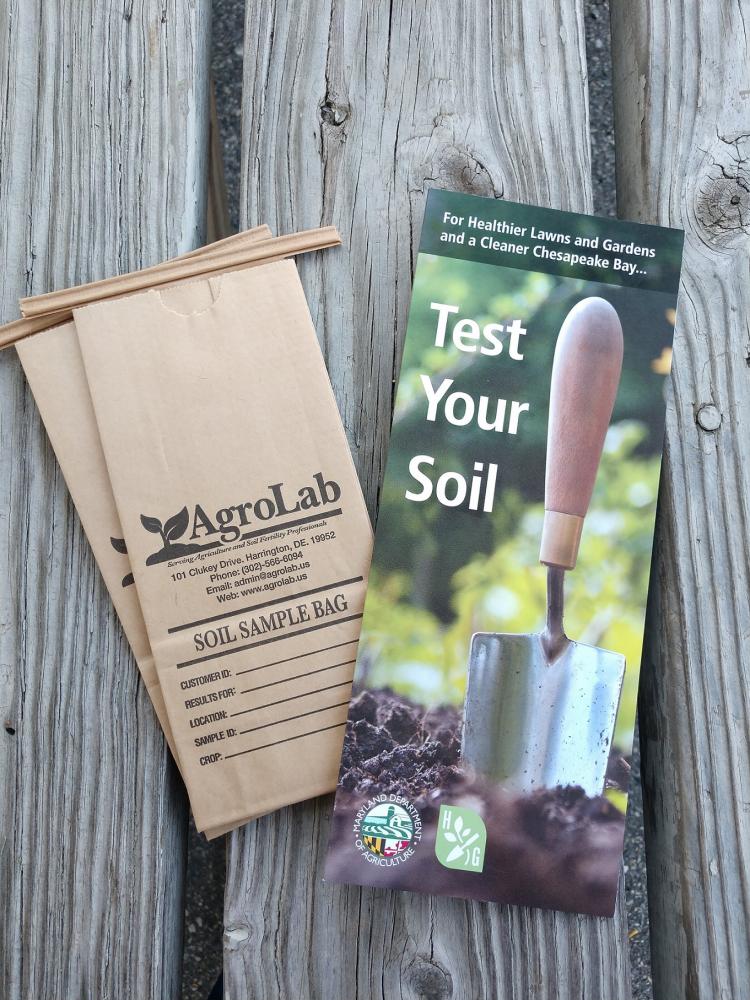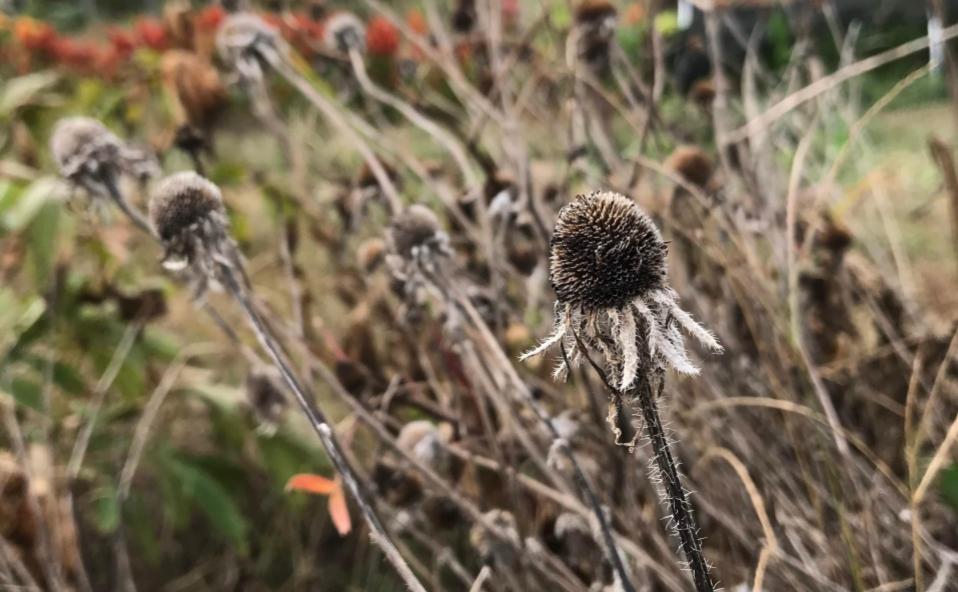
Black Eyed Susan (photo taken by Rachel Rhodes)
Our gardens have grown weary from the summer’s heat breathing a slight sigh of relief as the first day of fall slowly passes by. The nights grow cooler and the bright summer blooms fade into rich autumn golds, reds, and browns. The sun glows with golden rays embracing everything it touches like a warm blanket fresh out of the dryer wrapping around your shoulders and holding you close. Like a thief in the night our treasured fall days will quickly pass by. The crisp days of November will steal away any lasting hope of fall.
After the first real frost of the season–which usually occurs mid-November–the garden needs to be cut, pruned, staked, or mulched. How do you decide what should be done first?
Here are seven top tips for putting a garden to bed for winter:
1. Give Evergreens a “Haircut” Now is a good time to shape your boxwood or ilex if it needs a little trim and to make sure yews or any hedge looks neat. Pruning maintains plant health and promotes the desired appearance of the shrub.
a. Do not prune in the fall from August to late October, since new growth will not have a chance to harden off before winter.
b. Trim hollies and other evergreens during the winter if their branches will be used for holiday decorations. But, severe pruning of evergreens should be done in early spring.
c. Pruning overly-dense plants by thinning them out promotes air circulation and reduces disease incidence. An example is volutella blight of boxwood.
2. Leave Grasses-leaves grasses standing until things start looking kind of ratty after a couple of nor’easters. When even the prettiest ornamental grass looks tired and miserable, it’s time to start trimming…. But don’t leave them until April, that’s getting too late because you want to make room for the new growth to come in
a. Leave grasses standing to create structure in the fall and winter garden. This also creates habitat for ground nesting birds that may over winter in Maryland.
b. Seed pods and ornamental grasses can look beautiful covered with frost. Like Northern Sea Oats, Little Blue stem and Switchgrass to name a few.
c. Your cleanup date for grasses could be as late as February or as early as December, depending on the severity of a season’s storms.
3. Feed the Soil
a. Mulch paths and garden beds with straw, leaves, and/or newspaper- You can let that sit on top of beds for winter and then in spring it easily crumble into soil.
b. Autumn is a great time to add compost to garden beds after perennials are cut down.
c. Leaves and grass clippings- from your own yard or neighborhood. Shredded leaves are best because they rot faster than whole leaves. Spread them out on top of your garden in the fall and turn them under in the spring. Grass clippings (no herbicides) can be used as a mulch around vegetable plants or add them to your compost pile.
4. Do a Soil Test
a. The importance of soil to plant growth can be summed up in the aphorism “it’s better to plant a $2 tree in a $25 hole, than a $25 tree in a $2 hole.”
b. Fall is a good time to test soil because any soil amendments that you add in fall, like lime and compost, will have time to improve the soil before spring. Use the same lab each time you have your soil tested because there are no set standards followed by all testing labs.
c. Reducing the flow of nutrients into Maryland waterways is a principal mission of University of Maryland Extension (UME). The Home and Garden Information Center and Maryland Master Gardeners teach residents how to fertilize plants responsibly, improve and conserve garden soil, and recycle nutrients through composting and grasscycling. Soil testing gives gardeners important information they need to make good decisions regarding soils and fertilizers.
d. HG 110 “Selecting & Using a Soil Testing Laboratory” we also have youtube video on our UMDHGIC channel that you can view for a step by step guide. Here’s the link: https://youtu.be/ye7WtedsbsE

Soil Testing (Photo taken by Lee Ann Schnappinger-Bridgman)
5. Divide and Conquer
a. Fall is the perfect time to divide those perennials that have gotten a little unruly this spring. Granted it needs to rain first!
b. Plants are going dormant at this time of year, so they will adjust to having you dig them up and separate their roots.
c. After perennials quit blooming is the best time to divide crowded clumps. Split up and transplants hostas, phlox, cone flowers, irises, black eyed Susan’s and daylilies in autumn.
d. By spring, you won’t be able to tell you did anything murderous to a plant in the fall.
e. So how do you safely divide perennials?
i. There are two ways that you can make a division. The traditional method is to dig the entire plant out of the soil, using a spading fork to save as many roots as possible. Then divide the crown into two, three, or more pieces using a large knife, a spade, or just your hands.
ii. An alternative method is to remove only a portion of the plant by slicing off a section without digging out the entire plant. Replant the new divisions as soon as possible.
iii. Don’t leave them sitting in the sun for long, as they are very vulnerable to damage. If you cannot replant the divisions in a timely manner, place them in a bucket of water or temporarily plant them in mulch or compost.
iv. Large ornamental grasses can be very difficult to divide. Their crowns are tough and a spade or knife usually will not cut through them.
6. Transplant Trees & Shrubs
a. Although we all strive to place plants in the best possible locations, there comes a time when you decide a plant has to be moved. You can transplant small trees or shrubs from one location to another. Transplanting large trees, those with a trunk diameter of two inches or more, is more difficult and may require a landscape professional.
b. Transplant trees and shrubs when they are dormant.
c. In Maryland, there are two transplanting seasons: mid to late fall, and late winter to early spring.
d. Always consider weather and soil conditions in determining when to transplant.
e. Postpone planting in late fall or late winter if the weather conditions are unusually cold and the ground is frozen.
7. Wait to prune trees
a. Pruning, or the selective removal of specific branches or stems, is an important maintenance practice that helps to keep your trees healthy for many years to come.
b. Young trees can be pruned to prevent future branch structure issues or, if needed, to create a desired shape or form.
c. Important reasons to prune mature trees include controlling size, providing clearance for foot traffic or vehicles, removing potentially hazardous branches, and improving appearance.
d. The best time to prune most trees is late winter or early spring when you can see the structure of the tree without the distraction of leaves
e. Fruit trees: prune after Presidents’ Day
For further information, please visit https://extension.umd.edu/queen-annes-county/master-gardener-home-gardening or see us on Facebook @ https://www.facebook.com/QueenAnnesCountyMasterGardeners For more information contact: Rachel J. Rhodes, Master Gardener Coordinator at (410) 758-0166 or by email at [email protected].
University of Maryland Extension programs are open to all people and will not discriminate against anyone because of race, age, sex, color, sexual orientation, physical or mental disability, religion, ancestry, or national origin, marital status, genetic information, or political affiliation, or gender identity and expression.



Write a Letter to the Editor on this Article
We encourage readers to offer their point of view on this article by submitting the following form. Editing is sometimes necessary and is done at the discretion of the editorial staff.